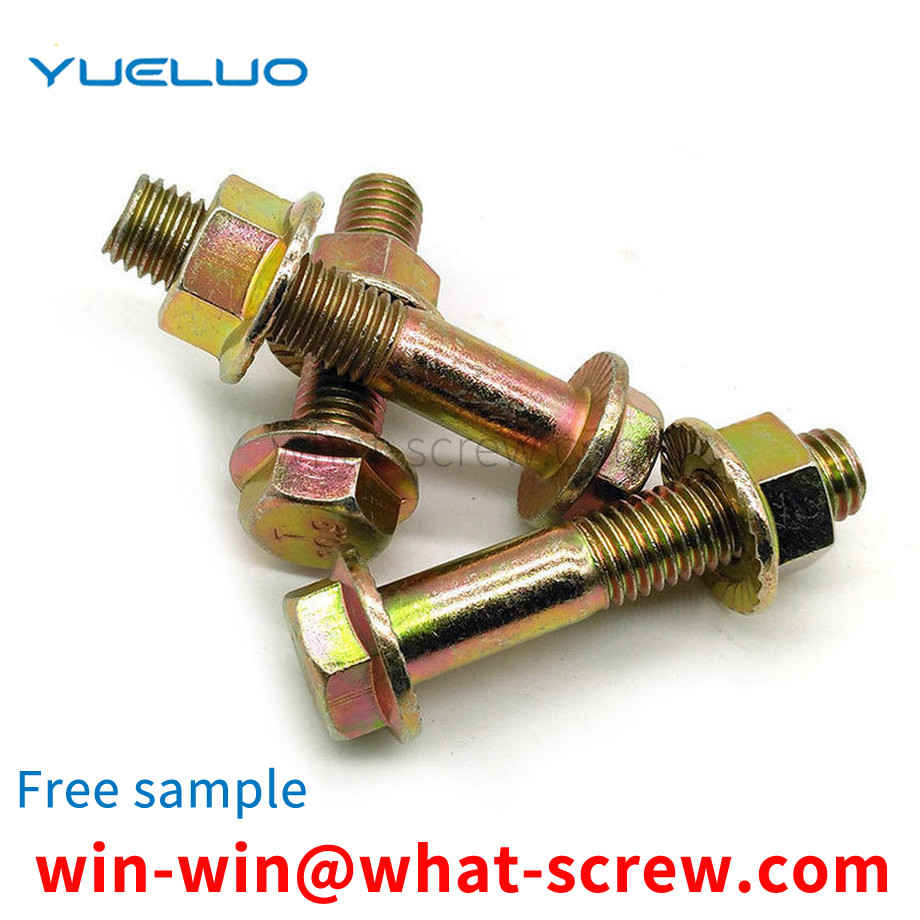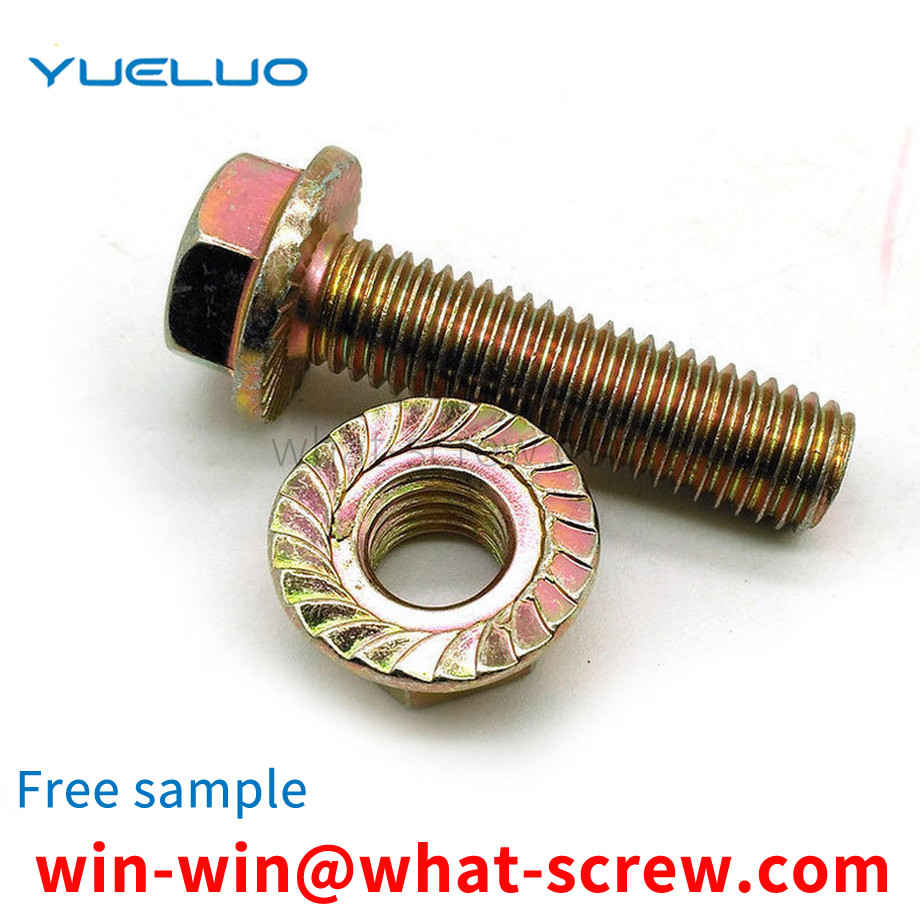The post-treatment of nickel-phosphorus plating includes two main processes of driving hydrogen and polishing. ①Hydrogen drive; according to the relevant standards, the hydrogen drive temperature after plating is 200±10℃, and the treatment time is 2h. 200 ℃ is beneficial to eliminate hydrogen embrittlement, relax internal stress, improve the bonding force between the coating and the substrate, and improve the corrosion resistance of the coating. ②Polishing; the polished bolt has a bright appearance, but in order to better improve the quality of the coating, smooth the tiny traces, and obtain a bright mirror-like surface, the coating needs to be polished with a polishing machine.
In general, the size, mechanical properties and working performance requirements of self-tapping screws have the following standards: 1. Self-tapping screw size standard ASME B18.6.3 2010 standard not only introduces the dimensions of slotted and cross-recessed self-tapping screws and metal drive screws, but also includes the mechanical properties and work performance requirements of carbon steel self-tapping screws. The appendix gives instructions for measuring the various dimensions and application guidance on clamping lengths and test apertures. 2. Self-tapping screw performance standards (including mechanical properties and work performance): (1) SAE J933: Introduces the mechanical performance and work performance requirements of carbon steel ordinary self-tapping screws and white-cut self-tapping screws. The requirements for selection of raw materials, heat treatment, depth of carburized layer, surface hardness, and core hardness are further specified. (2) SAE J81: The mechanical properties and working performance of self-extrusion self-tapping screws (self-tapping locking screws) are introduced. (3) SAE J78: The mechanical properties and working properties of self-drilling and self-tapping screws are introduced. (4) IFl-113: The mechanical properties and working properties of self-drilling and self-tapping screws are introduced. (5) ASTM C1513: Introduces the mechanical properties and performance requirements of carbon steel self-tapping screws. For other special types of self-tapping screws, there is no corresponding national or industrial standard, and no data for self-tapping screws made of other metal materials other than carbon steel have been recognized. For technical data on these self-tapping screws, you can check with the manufacturer.
With the rapid development of electronic technology, the integration of circuit boards is getting higher and higher, and the number of layers of circuit boards is increasing. Press-fit and fix to ensure accurate alignment during riveting and pressing. The rivets used on PCB boards are basically brass rivets. When riveting and pressing multi-layer PCB boards, metal chips are prone to appear, inner layer short circuits or foreign objects between layers, and because of the brass rivets With higher hardness and larger wall thickness, the riveted area of the PCB is thicker than the non-riveted area, which is easy to cause damage to the middle steel plate of the auxiliary tool. At the same time, the protruding rivets hinder the free expansion of the copper foil, which is easy to produce copper foil. wrinkling phenomenon. Now there are improved plastic rivets used to manufacture multi-layer PCB boards. The advantage is that no metal debris is generated, and at the same time, the tool steel plate is not damaged to the greatest extent. However, the existing plastic rivets are insufficient due to the inherent strength of plastics. When the PCB board is riveted and pressed, it is easy to deform, and the positioning is inaccurate, resulting in dislocation between layers, resulting in poor improvement of the product defect rate.
The existing screw generally includes a round table-shaped nail body with one large end and one small end, a threaded section is provided on the radial circumference of the nail body, a small end of the nail body is provided with an inclined tip, and the large end of the nail body is provided with a nail cover. , generally used on materials that are softer than the screw, and drill into the object to be nailed through its own rotation. When drilling, the thread plays the role of rotary cutting, so that the screw is drilled forward, but when the thread cuts the object to be nailed When it is shaken for a long time, the tightening force of the screw in the axial direction is not enough, it is easy to loosen, and there is a potential safety hazard.
Supporting T-bolts for pre-embedded channels, including hot-rolled pre-embedded channels, the lower part of the pre-embedded channel is provided with a longitudinal opening, and the head of the T-bolt enters from the opening and is clamped in the pre-embedded channel. There are plane teeth at the connection between the buried channel and the T-bolt, and the T-bolt has a tooth-shaped structure matched with the plane teeth. The direction of the teeth is parallel to the slotting direction, and the tooth-shaped cooperation achieves anti-slip effect. However, when the nut tightened on the T-bolt becomes loose, it will cause the T-bolt to move into the embedded channel and lose the toothed fit, thus changing the fixed position of the T-bolt in the embedded channel.
We have many years of experience in the production and sales of screws, nuts, flat washers, etc. The main products are: nylon cross bolts, KM iron screws, metric hexagon head screws, A-type flat washers and other products, we can provide you with suitable fasteners for you solution.



















 Service Hotline
Service Hotline




